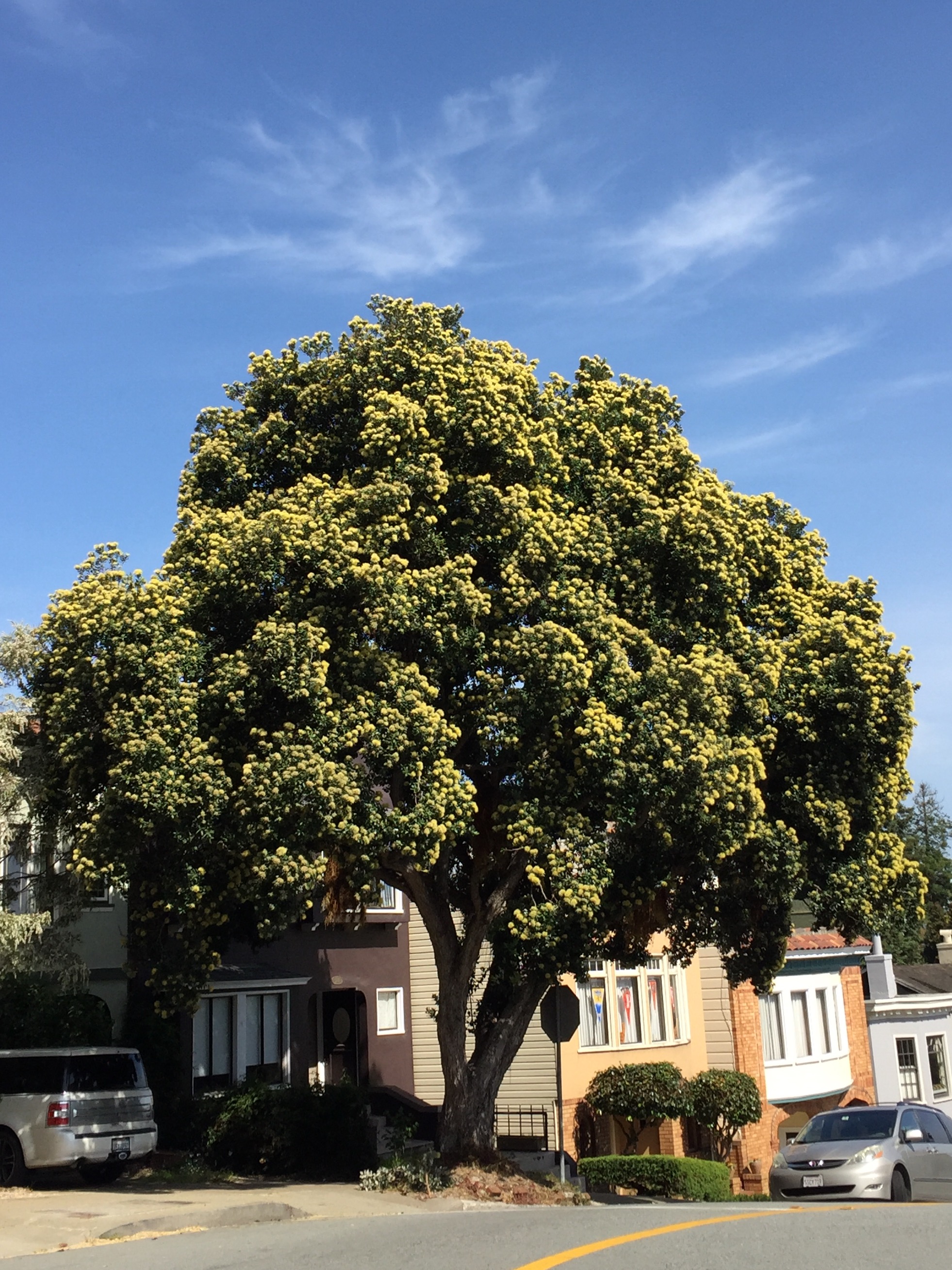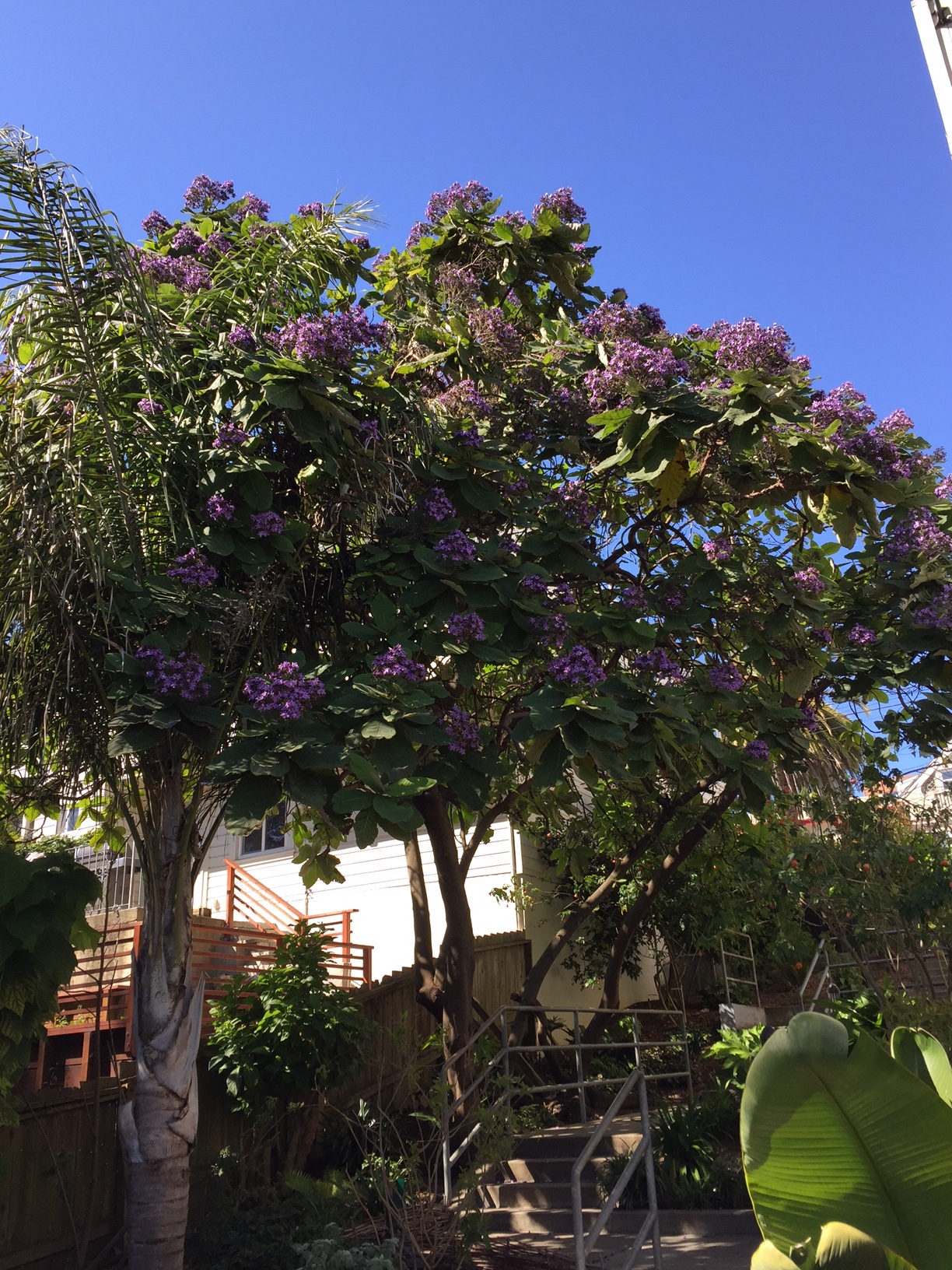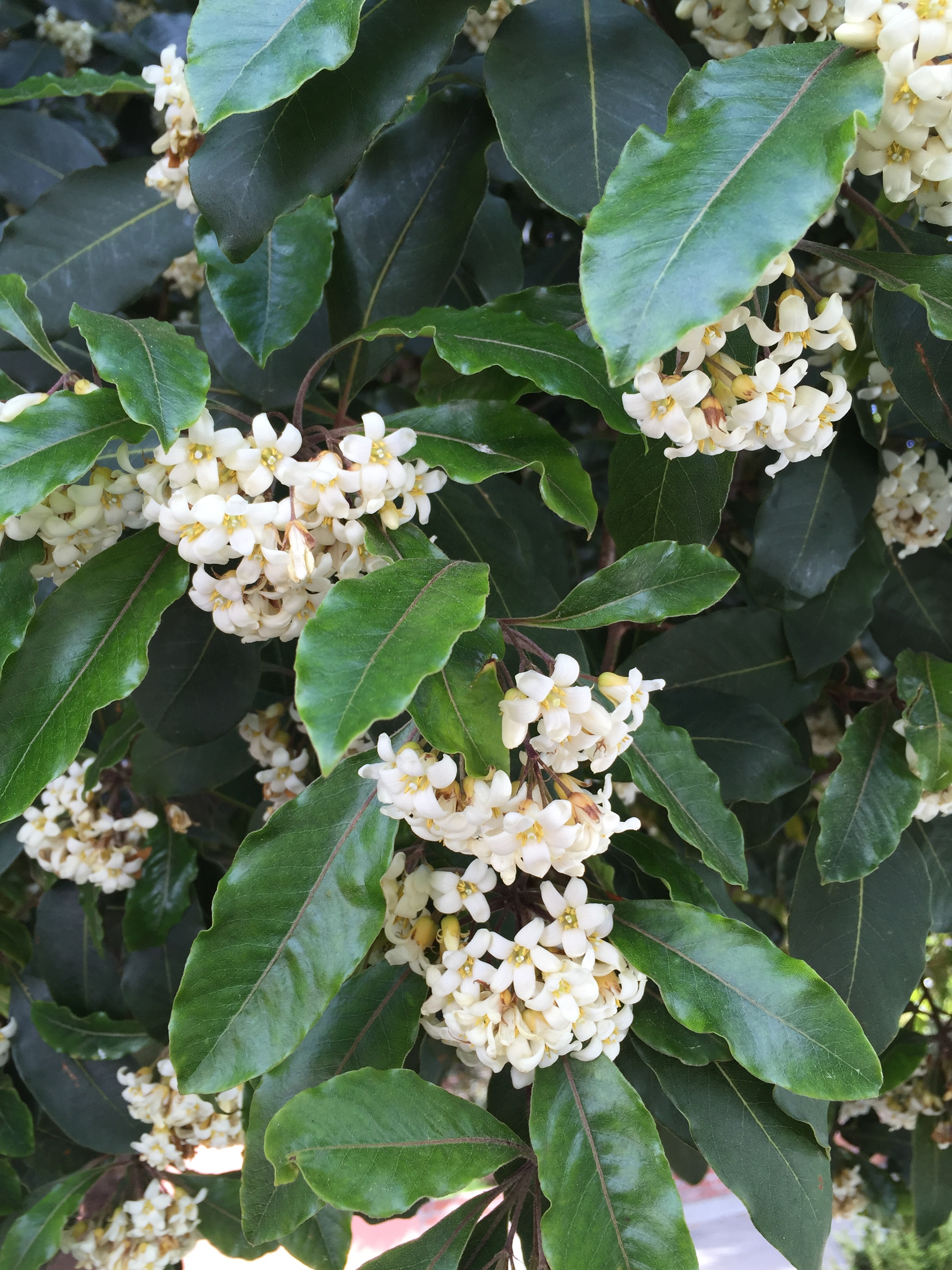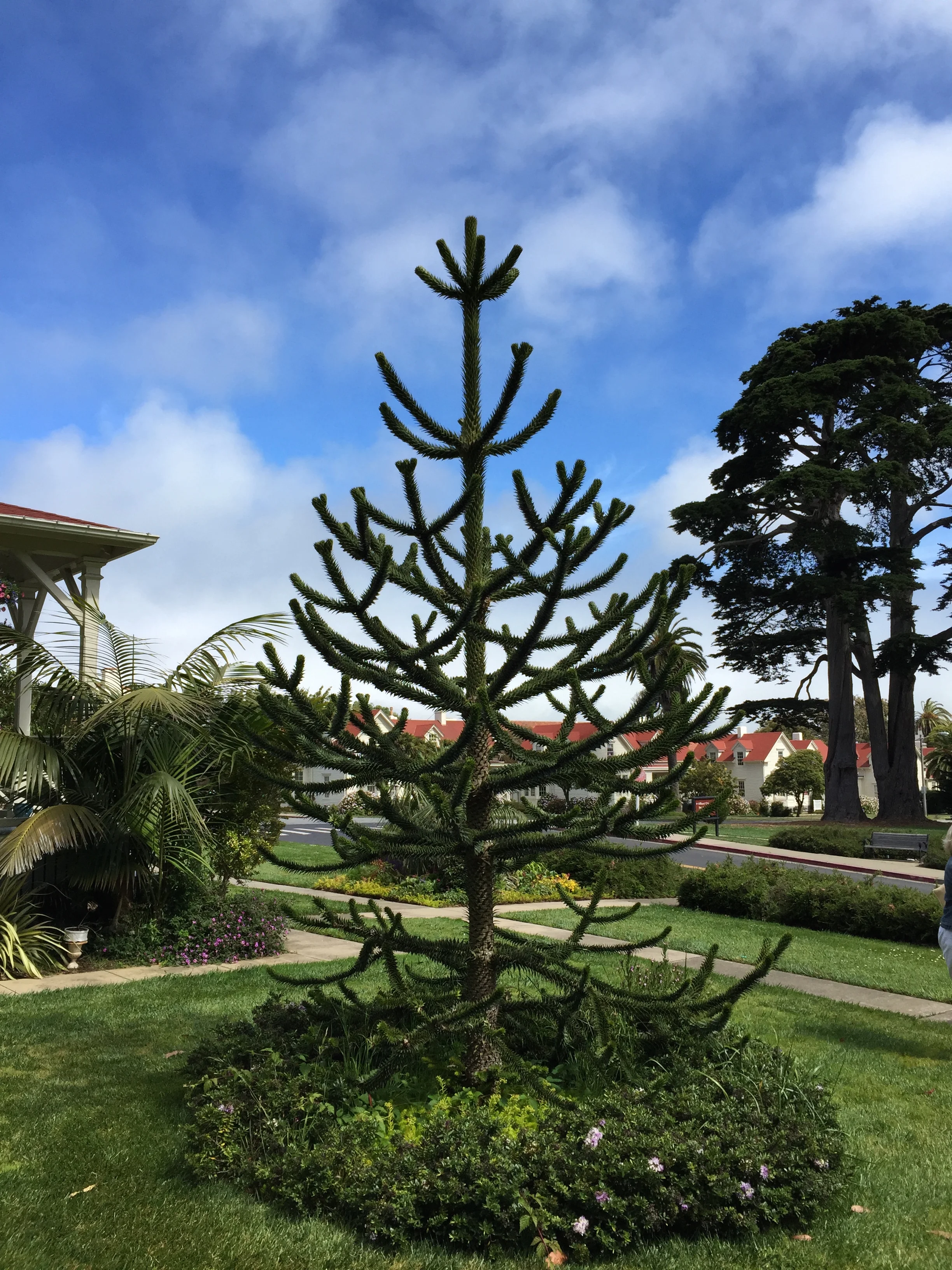Spring must be here - Acacia baileyana in bloom
Bailey's acacia - southwest corner of Grattan and Shrader Streets in Cole Valley
I've been doing a "Cole Valley Tree of the Month" series for some time in the Cole Valley Facebook group, and when I walked by this tree yesterday at the corner of Grattan and Shrader Streets in Cole Valley, I grabbed my iPhone, shot this picture and made it the "Cole Valley tree of January" - only to be reminded that it happened to be the first of February! It's just that I associate this tree - Bailey's acacia, or Acacia baileyana, with January blooms. Bailey's acacia is the first tree to bloom in the spring (after 30 years in San Francisco, it still seems weird to me to call January “spring”), and the brilliant yellow flowers are eye-catching. The tree is native to Australia, where it’s called “Cootamundra wattle”, as it's native to Cootamundra, New South Wales, just west of Canberra. (The town holds a 'Wattle Time' festival every year when the trees start to bloom.)
Acacias do put out a good amount of pollen, but the pollen is only mildly allergenic, and it's heavy, which means it exists only in the immediate vicinity of the trees. You're much more likely to suffer allergies from oaks, elms, pines, and and other wind-pollinated trees - the inconspicuous flowers of those trees don't get noticed, but they put out great quantities of lightweight pollen. Trees with colorful flowers aren't as likely to cause allergic reactions since the pollen is heavy and sticky (it's designed to stick to insect pollinators, who are attracted by the flower's color).











































Sed purus sem, scelerisque ac rhoncus eget, porttitor nec odio. Lorem ipsum dolor sit amet.